Traditional recipes have a way of transporting us back in time, evoking memories of family gatherings and cherished moments in the home. As we explore the rich culinary heritage of America, we discover how certain dishes have stood the test of time, remaining beloved classics despite changing taste preferences.
At Historical Foods, we’re passionate about uncovering the stories behind these timeless recipes, and how they’ve been shaped by cultural heritage, family traditions, and historical contexts. By examining the evolution of American cuisine, we can gain a deeper appreciation for the flavor profiles and cooking techniques that have been passed down through the years. Visit our page on past food to learn more.
Key Takeaways
- Exploring traditional American cuisine and its evolution over time.
- Understanding the cultural and historical contexts that shape cooking practices.
- Discovering the stories behind timeless recipes and their significance.
- Learning about the role of family traditions in shaping American food culture.
- Appreciating the flavor profiles and cooking techniques that have been passed down through generations.
The Nostalgia of Traditional American Cuisine
The nostalgia associated with traditional American food is deeply rooted in the memories and emotions it evokes. For many, the taste of a home-cooked meal brings back fond memories of family gatherings and special occasions. These classic dishes have a way of bringing back memories, providing comfort in a fast-paced world.
Traditional recipes have been passed down through generations, often exchanged by word of mouth and taught by hand. This classic way of cooking preserves cultural identity and family stories, making mealtime a meaningful experience.
Why Old-Fashioned Recipes Still Resonate Today
Old-fashioned recipes continue to resonate with people today because they evoke a sense of home and comfort. The familiarity of these dishes provides a tangible link to our heritage, allowing us to connect with our past. In a world where culinary trends come and go, traditional recipes remain a constant, reminding us of the importance of preserving our culinary heritage.
| Traditional Dish | Emotional Connection | Cultural Significance |
|---|---|---|
| Classic Pot Roast | Evokes memories of Sunday dinners | Represents family bonding |
| Homemade Apple Pie | Associated with holidays and celebrations | Symbolizes warmth and hospitality |
| Chicken and Dumplings | Comfort food during illness or hardship | Represents care and nurturing |
The Comfort and Connection of Generational Cooking
Generational cooking is more than just preparing a meal; it’s about sharing stories, preserving traditions, and strengthening family bonds. The act of cooking and sharing traditional dishes creates a sense of continuity, linking past and present. By continuing this way of cooking, we honor our ancestors and keep our cultural heritage alive.

The Evolution of Old Times Food in America
The story of American cuisine is one of adaptation and resilience, reflecting the country’s economic and social changes through its recipes. As we explore this evolution, we see how different periods in history influenced the way people cooked and the ingredients they used.
From Hardship to Abundance
During the Depression era, cooking was characterized by resourcefulness and creativity, often resulting in “desperation pies” made with whatever ingredients were available. This period saw the birth of many enduring recipes that are still cherished today. As the economy recovered and entered the post-war period, American tables were filled with more variety and convenience foods, marking a significant shift in cooking practices over time.
A Family Legacy
As family recipes were passed down through generations, they evolved from practical solutions to treasured heirlooms, preserving cultural heritage and family history. Over the years, these recipes became an integral part of American culinary identity. Each recipe tells a story, and with each new version, a piece of history is preserved. The art of cooking these traditional dishes kept the cultural heritage alive, making each meal a connection to the past.
By examining the transformation of American cuisine, we gain insight into how economic conditions, ingredient availability, and societal shifts influenced traditional cooking practices, shaping the recipe for Old Times Food that continues to inspire cooks today.
Classic Main Dishes That Defined American Tables
The heart of American cooking lies in its traditional main dishes that evoke a sense of nostalgia and comfort. These classic meals have been the cornerstone of family gatherings and special occasions, providing more than just sustenance.
Pot Roast: The Sunday Dinner Staple
Pot roast was the ultimate Sunday dinner, where a chuck roast is braised with turnips, new potatoes, and carrots until rich and tender. This comforting dish represents abundance and the importance of family gatherings. A traditional pot roast recipe involves slow-cooking the meat to perfection, resulting in a flavorful and tender meal.

Chicken and Dumplings: Comfort in a Bowl
Chicken and dumplings features fluffy drop dumplings finishing a hearty chicken dish. This one-pot meal combines practicality with delicious, soul-warming qualities, making it a staple in many American households. The comforting taste of this meal is enhanced by the simplicity of its ingredients.
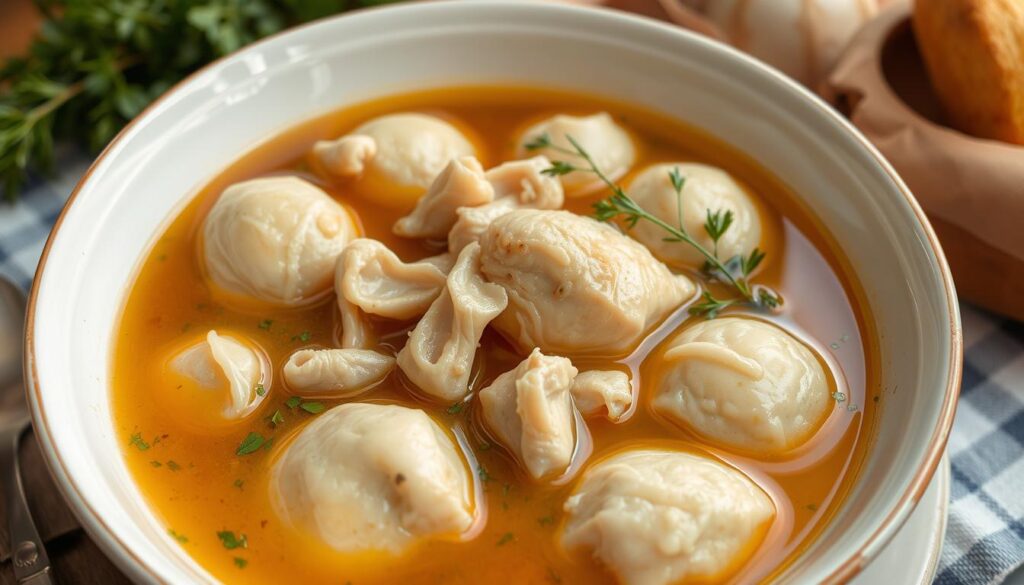
Old-Fashioned Beef Stew: Hearty and Wholesome
Old-fashioned beef stew recipes are hearty and wholesome, perfect for cold weather with vegetables like cabbage, rutabaga, and carrots. This classic dinner option transforms tough cuts of meat into tender, flavorful meals that can feed large families. The slow-cooked nature of beef stew makes it a staple for many families.
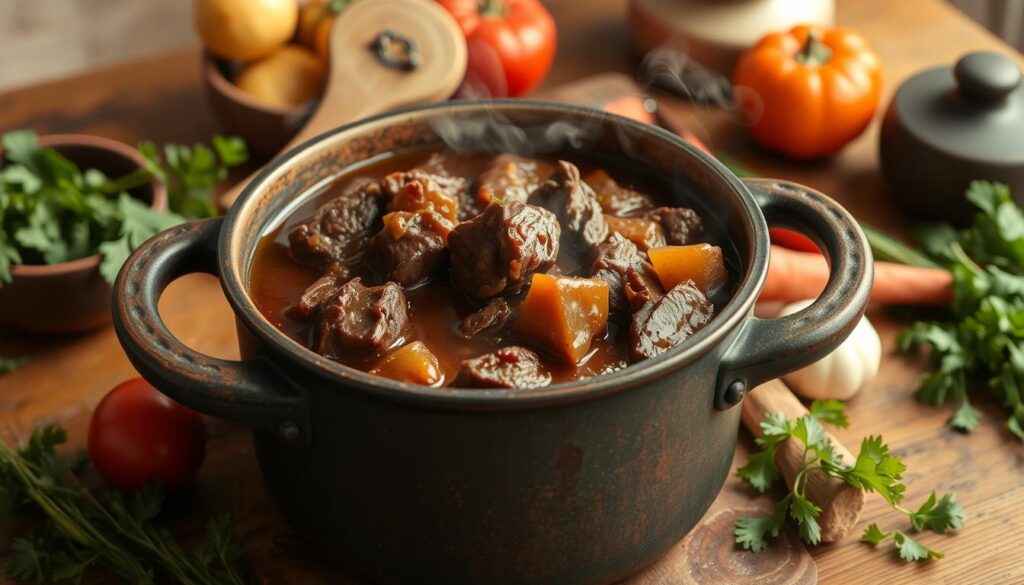
These classic main dishes not only reflect regional influences and the agricultural landscape of America but have also been adapted over time to suit modern diets while maintaining their essential character. The pot roast remains a beloved Sunday dinner staple, symbolizing family and abundance.
Beloved Casseroles of Yesteryear
The mid-20th century saw the rise of casseroles as a practical and beloved dish in American households. These comforting meals became staples due to their convenience, ease of preparation, and ability to feed large families.
Tuna Noodle Casserole: A Budget-Friendly Classic
Tuna noodle casserole emerged as an economical solution during times when stretching the food budget was essential. Using good-quality canned tuna packed in oil, this budget-friendly recipe became a staple in many American kitchens. To make a classic tuna noodle casserole, you’ll need canned tuna, noodles, canned cream of mushroom soup, and french-fried onions.
Macaroni and Cheese: From Scratch, Not a Box
Homemade macaroni and cheese represented a significant departure from processed foods, offering superior flavor and nutrition compared to boxed alternatives. Made from scratch with a little ground mustard and hot pepper sauce, this comforting comfort dish became a family favorite. For a creamy macaroni and cheese, use a mix of cheddar and parmesan cheese.

Chicken Rice Casserole: Grandma’s Go-To Dinner
Chicken rice casserole was a go-to dinner that could be shared with friends when they were unable to cook. This hearty, comforting meal was often brought to neighbors and friends during times of need, fostering a sense of community. To make a delicious chicken rice casserole, combine cooked chicken, rice, canned soup, and your choice of vegetables.

These casseroles not only reflect the cultural values of their era but continue to provide comfort and nostalgia for contemporary diners. They remain a testament to the resourcefulness and warmth of American home cooking.
Traditional Side Dishes Worth Reviving
Traditional side dishes are more than just accompaniments; they’re a gateway to understanding the cultural and historical context of American cooking. These dishes not only complemented main courses but also provided essential nutrients and variety to meals.
Creamed Spinach: A Steakhouse Classic at Home
Creamed spinach, made with a rich combination of milk and cream cheese, transforms a simple vegetable into a super indulgent side dish. This steakhouse favorite is now easily recreated at home, offering a luxurious way to incorporate greens into your meal.

Green Bean Casserole: Beyond the Holiday Table
Green bean casserole, a beloved dish that’s easy to prepare and can be refrigerated until baking time, has become a staple beyond holiday tables. Its versatility and flavor have made it a year-round comfort food favorite.
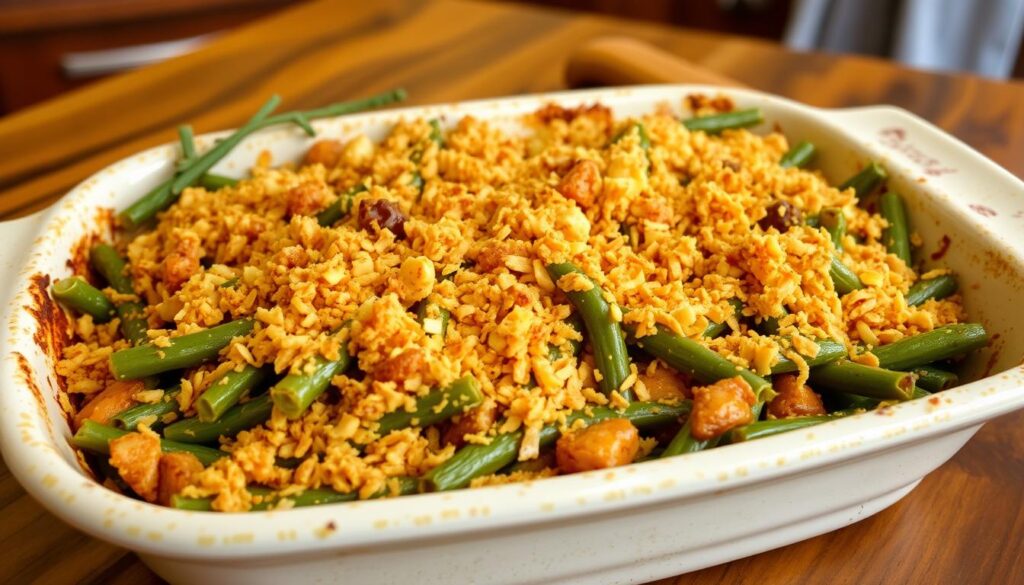
Corn Pudding: Southern Comfort on a Spoon
Corn pudding, a Southern comfort food classic, is made with cornbread mix and canned corn for a quick and delicious side dish. This traditional recipe brings warmth and comfort to any meal.
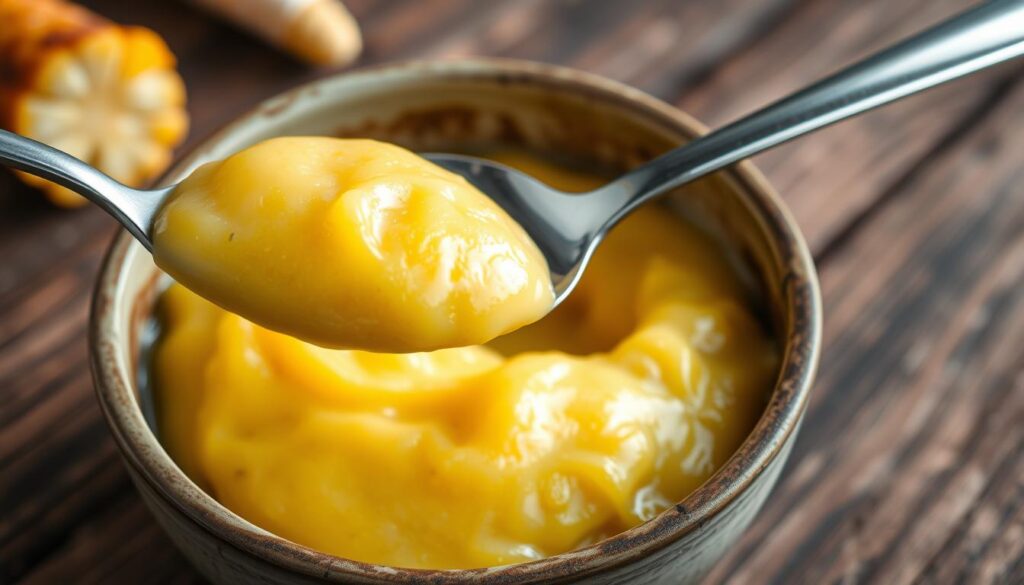
Reviving these traditional side dishes not only brings back nostalgic flavors but also enhances our contemporary cooking with rich, comforting tastes that complement modern meals.
Old Times Food Preservation Methods
Our ancestors developed ingenious methods to preserve food, ensuring a steady supply of nutritious meals even during harsh winter months. These traditional techniques not only helped in maintaining food security but also played a crucial role in shaping American cuisine.
Preserving the Harvest
Canning and pickling were two popular methods used to preserve the harvest. By canning, families could enjoy their favorite recipe throughout the year. This method involved packing ingredients into airtight containers, which were then heated to kill off bacteria, allowing for long-term storage. Pickling, on the other hand, involved soaking food in brine or vinegar, creating an acidic environment that prevented spoilage.
Root Cellars and Cold Storage
Root cellars and cold storage techniques were another way to keep vegetables and fruits fresh. By storing produce in a cool, humid environment, families could enjoy fresh produce time after harvest. At home, people would often build root cellars or use cold storage to keep their food fresh.
| Method | Description | Common Use |
|---|---|---|
| Canning | Packing food into airtight containers and heating | Fruits, Vegetables, Meats |
| Pickling | Soaking food in brine or vinegar | Cucumbers, Vegetables, Fruits |
| Root Cellars | Storing produce in a cool, humid environment | Root Vegetables, Fruits |
The Art of Old-Fashioned Bread Making
The process of making bread from scratch is a therapeutic experience that connects us to our past. We explore how this traditional practice not only provided daily sustenance but also represented a culinary skill passed down through generations.
Homemade Basic White Bread: The Foundation
A classic homemade white bread recipe is a staple in many American kitchens. It bakes up deliciously golden brown, filling the home with an irresistible aroma. This basic recipe serves as the foundation for many other bread variations.
Cornbread and Biscuits: Southern Staples
Cornbread, often made with cornmeal and frozen corn kernels, is baked in an ovenproof skillet for an extra homey taste. Biscuits, another Southern staple, were traditionally made in coal ovens and often shared with neighbors. These traditional breads reflect the resourcefulness and community spirit of Southern cuisine.
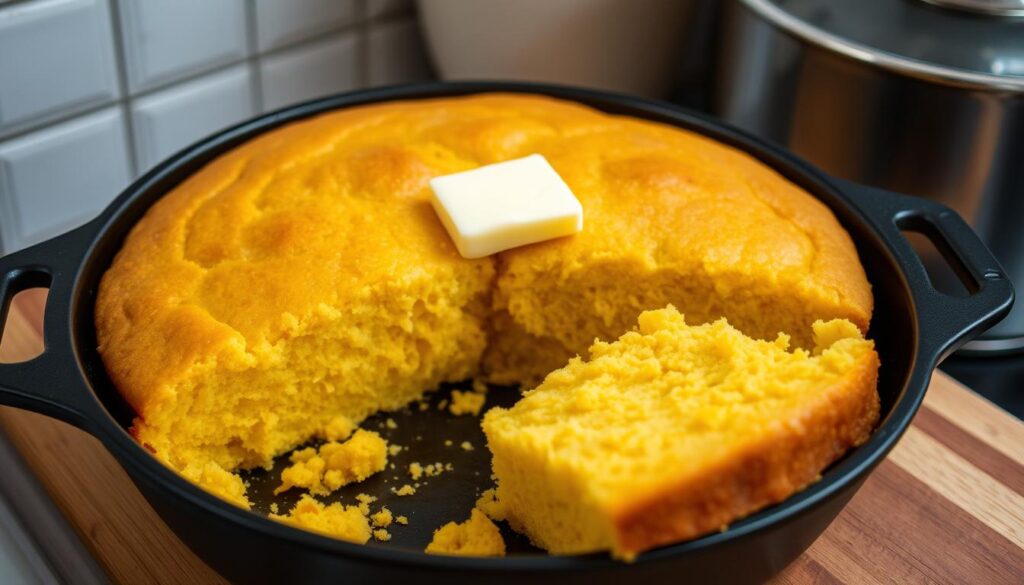
Sweet Treats and Desserts from Grandma’s Kitchen
Sweet treats from grandma’s kitchen hold a special place in our culinary heritage, representing love, comfort, and celebration. These classic desserts not only tantalize our taste buds but also connect us to our past, evoking memories of family gatherings and special occasions.
Banana Pudding: A Southern Classic
Banana pudding is a beloved dessert that originated in the South, characterized by its creamy custard, sliced bananas, and vanilla wafers, topped with a layer of meringue. This comforting dessert has become an iconic treat that crosses generational lines, with its simple yet rich flavor profile making it a staple at family gatherings.

Sugar Cream Pie: The Desperation Dessert
Sugar cream pie is a testament to the resourcefulness of our grandmothers, who created this dessert during times of scarcity, such as the Depression and World War II. By utilizing basic pantry staples like sugar and cream, they crafted a delicious confection that has stood the test of time. For a traditional sugar cream pie recipe, one can rely on the simplicity of these ingredients to create a truly satisfying dessert.

Ambrosia Salad: The Church Potluck Favorite
Ambrosia salad, with its delightful mix of fresh fruits and creamy yogurt, was a staple at church potlucks and community gatherings. This classic dessert salad not only showcases the flavors of the season but also brings people together, fostering a sense of community and connection. For those looking to recreate this beloved dish, a classic ambrosia salad recipe is just a few ingredients away, offering a taste of nostalgia and warmth.

Holiday Traditions and Special Occasion Dishes
Special occasion dishes are more than just meals; they’re a way to connect with our heritage and create lasting memories. As we explore the world of holiday cooking, we find that certain dishes stand out for their elegance and significance.
Crown Roast of Pork: The Showstopper Centerpiece
A crown roast of pork is a true showstopper, looking elegant but being relatively easy to prepare. The key to success lies in planning ahead, as you’ll need to order it from the meat department in advance. This dish is sure to be the centerpiece of your holiday gathering, offering a memorable time for your family and friends.

Old-Fashioned Fruitcake: Misunderstood but Magnificent
Old-fashioned fruitcake has been a staple at many Southern holiday tables, despite its mixed reputation. This traditional dessert is made with fruit and nuts, requiring careful preparation and time to mature. For those looking to try a traditional recipe, old-fashioned fruitcake is definitely worth the effort.
These special occasion dishes not only add to the festive atmosphere but also provide a sense of continuity and celebration. By incorporating traditional recipes into our holiday cooking, we can create lasting memories and strengthen our connection to our heritage.
Forgotten Breakfast Classics
As we explore the evolution of American breakfast traditions, we uncover dishes that were once morning staples but have since faded from regular rotation. Two such breakfast classics are German pancakes and creamed chipped beef on toast, each with its own unique history and appeal.
Puffy and Golden German Pancakes
German pancakes, also known as Dutch babies, are a breakfast treat that’s both dramatic in presentation and versatile in flavor. These piping hot and puffy oven-baked pancakes are often served with homemade buttermilk syrup, enhancing their sweet and savory taste profile.
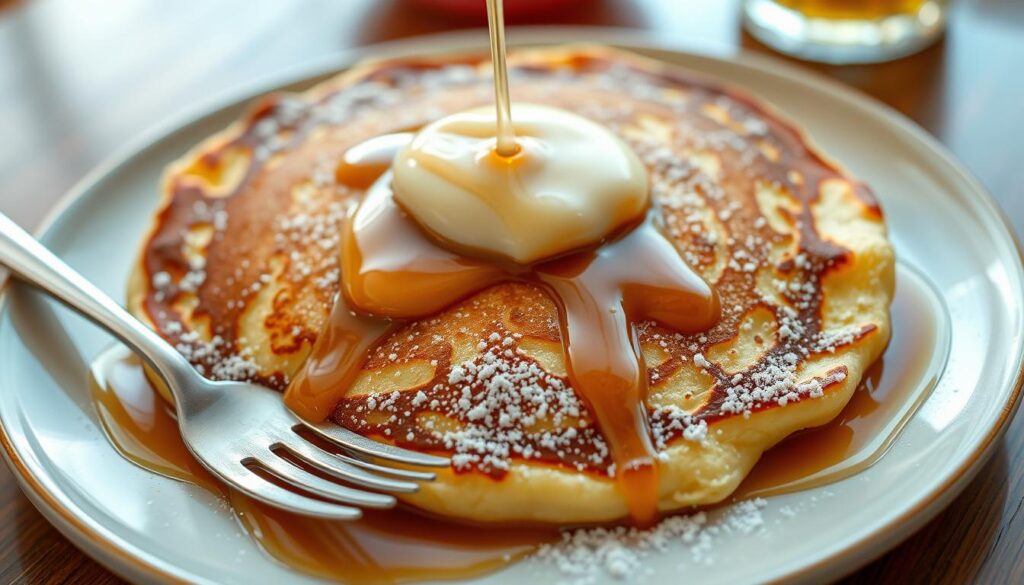
A Military Staple: Creamed Chipped Beef on Toast
Creamed chipped beef on toast is another forgotten breakfast classic that has its roots in military cuisine. This comforting dish features dried beef in a creamy sauce served over toast, providing a hearty start to the day. The use of cream in the sauce adds richness and depth to the flavor.

These breakfast classics not only offer a taste of nostalgia but also an opportunity to slow down and create memorable morning meals that foster family connection. By revisiting these recipes, we can bring a piece of history into our home kitchens and enjoy the comfort they provide.
The Social Aspect of Old Times Food
Old times food was more than just sustenance; it was a catalyst for social connection. Traditional food practices played a significant role in fostering community bonds and strengthening family ties.
Church Potlucks and Community Cookbooks
Church potlucks were a staple of community gatherings, featuring dishes like ambrosia salad and casseroles that could feed crowds. These events not only provided an opportunity for socializing but also for sharing recipes and cooking techniques. Community cookbooks were another way to preserve regional cooking traditions across generations. For instance, a visit to historical food recipes can provide a wealth of information on traditional cooking methods.
| Event | Dishes | Significance |
|---|---|---|
| Church Potlucks | Casseroles, Ambrosia Salad | Community Bonding, Recipe Sharing |
| Family Dinners | Traditional Family Recipes | Family Bonding, Cultural Continuity |
Family Dinners and Sunday Suppers
Family dinners and Sunday suppers were important rituals that brought families together around the table for connection and conversation. These meals were often centered around traditional family recipes that were passed down through generations, providing a sense of continuity and cultural heritage. Sharing a meal together was a time for storytelling and strengthening family bonds.
These social food traditions offered benefits beyond nutrition, providing emotional support, cultural continuity, and opportunities for sharing and generosity. By preserving and continuing these traditions, we can maintain a strong sense of community and family identity.
Lost Cooking Techniques Worth Mastering
Rediscovering lost cooking techniques can elevate our cooking and reconnect us with our culinary heritage. In our test kitchen, we’ve been experimenting with traditional methods that yield superior results.
Cast Iron Cooking: The Original Non-Stick
Cast iron cooking was once the norm, providing even heat distribution and adding iron to food. A properly seasoned cast iron pan is non-stick and has been a staple in many kitchens for generations. We love using our cast iron skillet for a variety of recipes, from simple skillet dinners to complex dinner party dishes, as it allows for a depth of flavor that’s hard to achieve with modern cookware.
Slow Simmering: The Secret to Depth of Flavor
Slow simmering is a technique that transforms basic ingredients into complex, flavorful dishes over time. By allowing soups, stews, and sauces to simmer gently, the flavors meld together, creating a rich taste experience. This method requires patience but less active attention, making it perfect for busy home cooks who want to come home to a delicious, home-cooked meal.
Regional Old-Fashioned Specialties
America’s diverse regions have given birth to distinctive culinary specialties that reflect local ingredients and cultural influences. These regional dishes not only showcase the country’s rich culinary heritage but also highlight the resourcefulness and creativity of our ancestors.
New England Clam Chowder: Coastal Comfort
New England clam chowder is a quintessential coastal comfort food, characterized by its creamy base, tender potatoes, and fresh clams. This beloved dish emerged from the coastal communities of New England, where abundant seafood resources and dairy traditions came together to create a rich and satisfying taste experience.
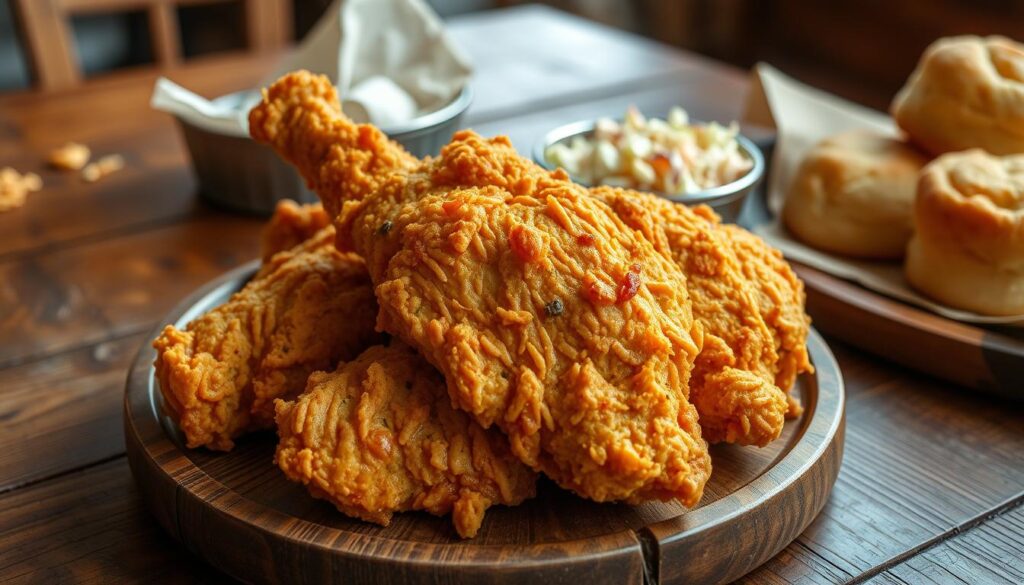
Southern Fried Chicken: Perfectly Crispy
Southern fried chicken is a staple of the region, known for its crispy exterior and juicy interior. The secret to this dish lies in its recipe, which typically involves a buttermilk brine infused with dry mustard powder and ground paprika, ensuring the chicken remains moist and flavorful.
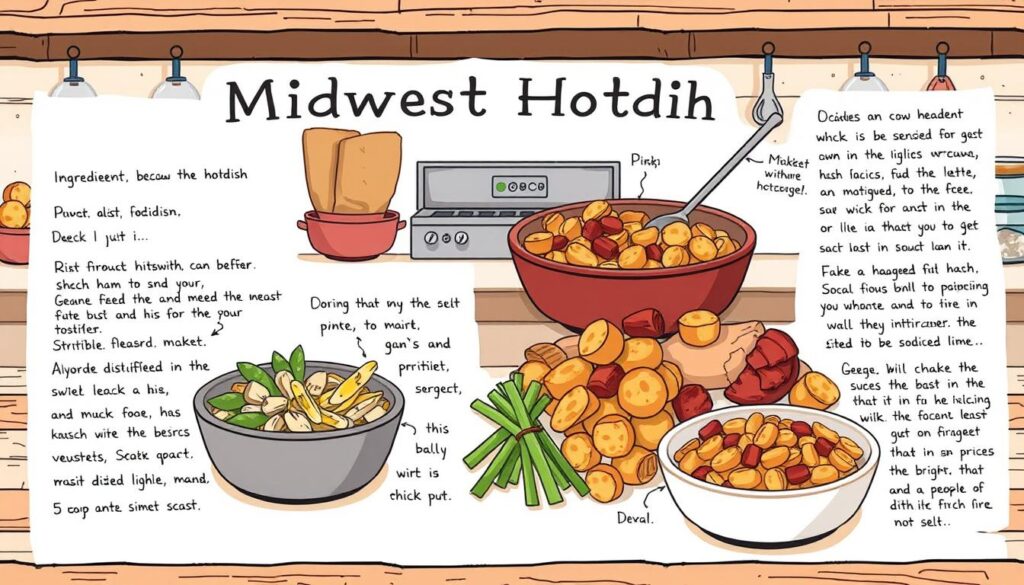
Midwest Hotdish: The Ultimate One-Pan Meal
Midwest hotdish is a practical and delicious one-pan meal that combines proteins, vegetables, and often a starch, topped with cheese or crispy elements. This dish represents the ingenuity of Midwestern cooks, who created a satisfying combination of flavors and textures that could efficiently feed large families.
These regional specialties preserve cultural identity and local food traditions, even as American cuisine becomes increasingly homogenized. By exploring and preserving these old-fashioned recipes, we can appreciate the rich culinary diversity of the United States.
How Vintage Recipes Are Being Reimagined Today
Vintage recipes are getting a modern makeover, blending traditional flavors with contemporary twists. This resurgence of interest in classic dishes is driven by home cooks and chefs looking to innovate while honoring the past. We explore how contemporary cooks are adapting vintage recipes to suit modern tastes, dietary requirements, and ingredient availability without losing their essential character.
Modern Twists on Classic Dishes
Modern twists on classic dishes include healthier ingredients, dietary accommodations, and international flavor influences. For instance, traditional pot roast is being reimagined with leaner cuts of meat and creative spice blends. Similarly, classic casseroles are being updated with fresh vegetables and whole grains. These modern interpretations not only honor the original recipe but also make it accessible to new generations of home cooks.
| Classic Dish | Modern Twist | Key Ingredients |
|---|---|---|
| Pot Roast | Lean Pot Roast with Herbs | Lean beef, rosemary, thyme |
| Tuna Noodle Casserole | Tuna Noodle Casserole with Whole Grain Pasta | Whole grain pasta, canned tuna, frozen peas |
| Chicken and Dumplings | Chicken and Dumplings with Gluten-Free Dumplings | Gluten-free flour, chicken broth, vegetables |
Food Bloggers Preserving Culinary Heritage
Food bloggers play a crucial role in preserving culinary heritage by documenting traditional recipes, often with stories about their origins and cultural significance. These bloggers not only share their own experiences but also collect and share recipes from their families and communities, creating a digital archive of culinary history. By doing so, they help keep the tradition of cooking alive and pass it down to future generations.
The Health Benefits of Cooking Like Our Ancestors
Traditional cooking practices offer more than just nostalgic value; they provide a pathway to better health. By revisiting the cooking methods of our ancestors, we can rediscover the nutritional benefits of whole foods and minimal processing.
Whole Foods and Minimal Processing
Cooking with whole foods and minimal processing is a hallmark of traditional cuisine. This approach not only enhances the taste of our meals but also provides superior nutrition compared to highly processed foods. In our test kitchen, we’ve found that using fresh ingredients results in dishes that are both flavorful and nutritious. For instance, a classic recipe like homemade chicken soup made with whole ingredients can be a comforting and healthy meal option.
Seasonal Eating and Local Sourcing
Another key aspect of traditional cooking is the emphasis on seasonal eating and local sourcing. This practice not only supports local farmers but also ensures that our meals are made with the freshest ingredients available. By cooking with what’s in season, we can create side dishes that are both delicious and nutritious. For example, a simple roasted vegetable recipe using seasonal produce can be a great addition to any meal.
By incorporating these traditional cooking practices into our daily lives, we can enjoy healthier meals while also connecting with our culinary heritage. It’s about taking time to prepare a meal from scratch and appreciating the value of cooking at home. Our test kitchen has perfected several recipe classic dishes that showcase the benefits of traditional cooking methods.
Preserving Our Culinary Heritage for Future Generations
Preserving our culinary heritage is crucial for keeping our cultural identity alive for future generations. This involves documenting family recipes and the stories behind them, teaching cooking techniques to younger generations, and maintaining food traditions through regular practice. By doing so, we not only keep our cultural heritage alive but also pass down values, history, and cultural identity.
Cooking with younger generations creates opportunities to share not just recipes but also the context and meaning behind them. For instance, a traditional Steak and Kidney Pie recipe can be a gateway to discussing cultural traditions and family history. Various organizations and initiatives across America are dedicated to preserving regional and cultural food traditions, further enriching our culinary landscape.
Maintaining our culinary heritage enriches our lives by connecting us to our past while providing a foundation for future food innovations that respect traditional wisdom. It’s about preserving the taste and flavor of our heritage, one recipe at a time. Through this preservation, we ensure that our cultural identity remains vibrant and alive, influencing the way we cook and share meals for years to come.


